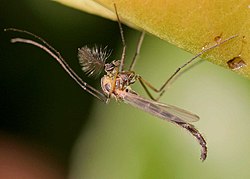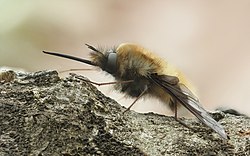Tipula (craneflies)



- Tipula pectinicornis – Ctenophora pectinicornis
- Tipula rivosa – Pedicia rivosa
- Tipula crocata – Nephrotoma crocata
- Tipula oleracea – Tipula oleracea
- Tipula hortorum – Tipula hortorum
- Tipula variegata – nomen oblitum for Tipula vernalis Meigen, 1804 [1] [2]
- Tipula contaminata – Ptychoptera contaminata
- Tipula lunata – Tipula lunata
- Tipula pratensis – Nephrotoma pratensis
- Tipula terrestris – Limonia stigma (Meigen, 1818)
- Tipula cornicina – Nephrotoma cornicina
- Tipula nigra – Nigrotipula nigra
- Tipula atrata – Tanyptera atrata
- Tipula maculata – nomen oblitum for Dictenidia bimaculata (Linnaeus, 1761)
- Tipula annulata – Limonia annulata
- Tipula flavescens – Nephrotoma flavescens
- Tipula regelationis – Trichocera regelationis
- Tipula replicata – Phalacrocera replicata
- Tipula plumosa – Chironomus plumosus
- Tipula littoralis – [ nomen dubium ] in Chironomus [3]
- Tipula motatrix – Cricotopus motatrix
- Tipula vibratoria – Cricotopus sylvestris
- Tipula tremula – Cricotopus tremulus
- Tipula monilis – Ablabesmyia monilis
- Tipula macrocephala – [ nomen dubium ]
- Tipula marci & Tipula brevicornis – Bibio marci
- Tipula putris – [ nomen dubium ]
- Tipula febrilis – Dilophus febrilis
- Tipula florilega – [ nomen dubium ]
- Tipula hortulana – Bibio hortulanus
- Tipula phalaenoides – Psychoda phalaenoides
- Tipula notata – Scatopse notata
- Tipula juniperina – Oligotrophus juniperinus
- Tipula palustris – Cecidomyia palustris
- Tipula longicornis – [ nomen dubium ]
- Tipula pinnicornis – [ nomen dubium ]













